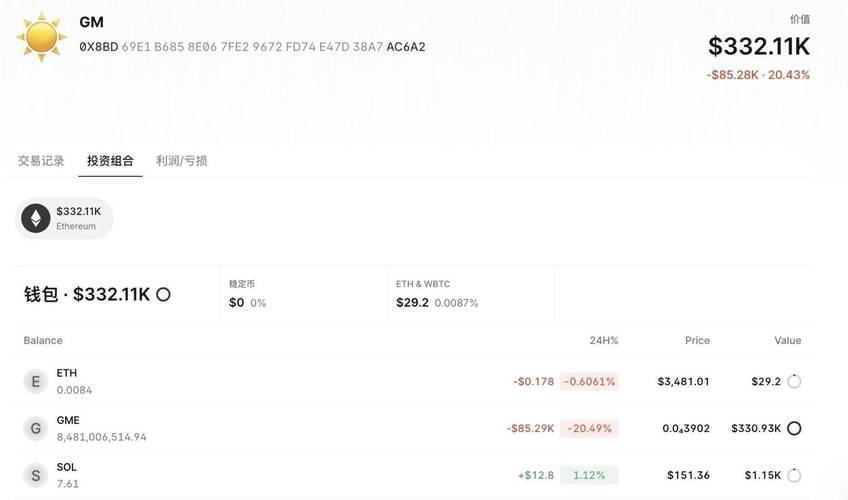Understanding the ETH Daily Chart: A Comprehensive Guide
When it comes to analyzing the cryptocurrency market, the Ethereum daily chart is a vital tool for traders and investors. It provides a snapshot of the market’s performance over a 24-hour period, allowing you to make informed decisions based on historical data. In this article, we will delve into the intricacies of the ETH daily chart, exploring various aspects that can help you understand and interpret the information it presents.
Understanding the Basics
The ETH daily chart typically displays the price of Ethereum over a 24-hour period, along with various technical indicators and price patterns. To make sense of this chart, it’s essential to familiarize yourself with the following components:

- Price: The most straightforward element of the chart, showing the price of Ethereum at any given time.
- Volume: The total number of Ethereum units traded over the specified period, providing insight into market liquidity.
- Open and Close Prices: The opening and closing prices of the day, which can help identify the market sentiment.
- High and Low Prices: The highest and lowest prices reached during the day, indicating the market’s range.
Additionally, the chart may include various technical indicators, such as moving averages, RSI (Relative Strength Index), and MACD (Moving Average Convergence Divergence), which can provide further insights into the market’s direction and potential trading opportunities.
Interpreting Price Patterns
Price patterns are essential for understanding the ETH daily chart. They can help you identify potential trends, reversals, and continuation patterns. Here are some common price patterns to watch out for:
- Trend Lines: These lines connect the highs and lows of a trend, helping you identify the direction of the market.
- Support and Resistance: These levels indicate where the market is likely to reverse or continue in its current direction.
- Head and Shoulders: This pattern suggests a potential reversal from an uptrend to a downtrend.
- Bullish and Bearish Flags: These patterns indicate a continuation of the current trend.
By recognizing these patterns, you can better understand the market’s behavior and make more informed trading decisions.
Using Technical Indicators
Technical indicators are tools that help you analyze the ETH daily chart and make predictions about the market’s future direction. Here are some popular indicators to consider:

- Simple Moving Average (SMA): This indicator calculates the average price of Ethereum over a specified period, helping you identify the market’s trend.
- Exponential Moving Average (EMA): Similar to the SMA, but with more weight given to recent data, making it more responsive to price changes.
- Relative Strength Index (RSI): This indicator measures the speed and change of price movements, helping you identify overbought or oversold conditions.
- MACD: This indicator compares two moving averages to identify potential buy or sell signals.
By combining these indicators with price patterns, you can gain a more comprehensive understanding of the market and make more accurate predictions.
Reading the Volume
Volume is a critical component of the ETH daily chart, as it provides insight into the market’s liquidity and potential strength of a trend. Here’s how to read volume:
- High Volume: A high volume of trading indicates strong interest in the market, suggesting that the trend is likely to continue.
- Low Volume: A low volume of trading suggests a lack of interest in the market, which can indicate a potential reversal or consolidation.
- Volume Divergence: When the price is moving in one direction, but the volume is decreasing, it may indicate that the trend is losing momentum.
By analyzing volume, you can better understand the market’s dynamics and make more informed trading decisions.
Conclusion
Understanding the ETH daily chart is crucial for anyone looking to trade or invest in Ethereum. By familiarizing yourself with the chart’s components, price patterns, technical indicators, and volume, you can gain valuable insights into the market’s behavior and make more informed decisions. Remember that the key to successful trading is patience
